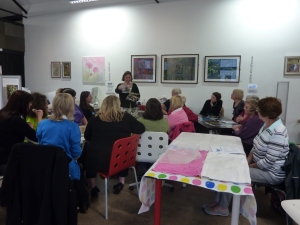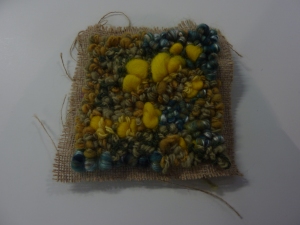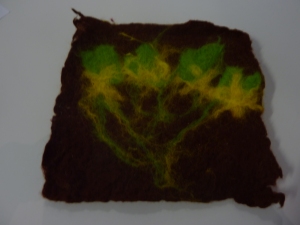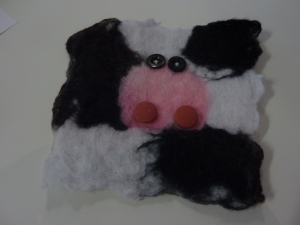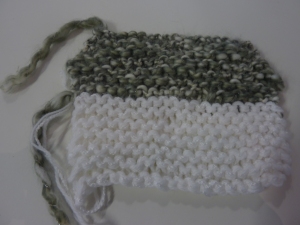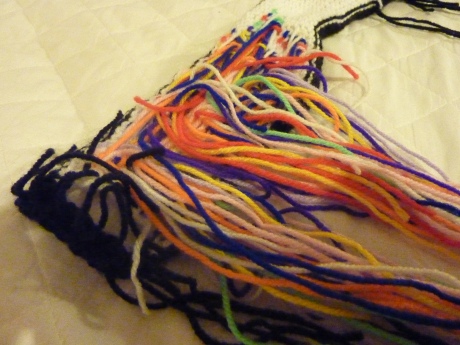
Knitting Dickens
I have been busy this week using the poetry code to knit samples of Dickens poetry. This is the reverse of The Hymn of the Wiltshire Labourers. As you can see it looks like the wires of a telephone exchange or backstage at a rock concert. I often wonder how electricians know what goes where. All these threads have now been cut and woven into the back, and the front resembles a piece of ancient text – only in coloured wool rather than sculpted stone. As I was working on this piece I recalled a childhood memory.
When I was at junior school we used to go to Saturday morning cinema at the Odeon in Bishop Auckland. By we I mean hundreds of children from the town. Films played to a packed house and there were activities during the interval. One time we were asked to bring in scraps of wool to join into a giant multi-coloured ball to send to Africa so that people could knit blankets to keep warm. A while ago this was the inspiration for a poem which I invited the audience to perform as a parallel chant during the Dances with Sheep evening at NeST last March. The words are as follows:
Group A
(Recites the verse while group B chants the chorus)
Scraps of ev’ry colour,
any old yarn will do.
Red, blue, green and orange,
white and multi too.
Join them all together,
to make one ball, brand new.
Send it off to Africa,
a blanket from me to you.
Group B
(Chants the following chorus four times while Group A recites the verse)
Wind them round, wind them round,
wind them round and round.
You might like to try this out with a school or community group and develop a discussion about the way the colours of the British and African flags have been woven into the poem. This could form the springboard for poetry inspired by the Olympic flag which was created at the suggestion of Baron de Coubertin in 1913.
The flag has five interlaced rings in the centre of a white background. The rings represent the five continents joined in the Olympic movement. Each country has one or more of the Olympic colours in its national flag. The colours are: blue, yellow, black, green and red.
The flag was flown for the first time at the 1920 Olympics in Antwerp and will fly from the main Olympic stadium in London in 2012 as well as from the other official Olympic venues.
Once you or your group have created a poem you can upload it here. Follow this blog over the next few weeks for details of forthcoming poetry competitions linked to Barnard Castle’s Winning Words project.
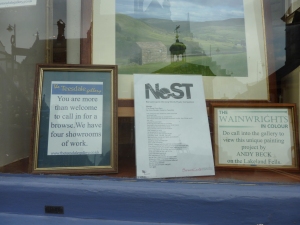 Shops in Barnard Castle are displaying copies of short-listed poetry entries for the Winning Words open poetry competition. Poems can be viewed at: Barney Framers, Barney Wool, Brookes, Cheese Fiend, Chocolate Fayre, McFarlane’s, Moody Baker, Picture This, Teesdale Gallery, Teesdale Pods and Teesdale Restaurant. So next time you are in town take a moment to stop and read.
Shops in Barnard Castle are displaying copies of short-listed poetry entries for the Winning Words open poetry competition. Poems can be viewed at: Barney Framers, Barney Wool, Brookes, Cheese Fiend, Chocolate Fayre, McFarlane’s, Moody Baker, Picture This, Teesdale Gallery, Teesdale Pods and Teesdale Restaurant. So next time you are in town take a moment to stop and read.